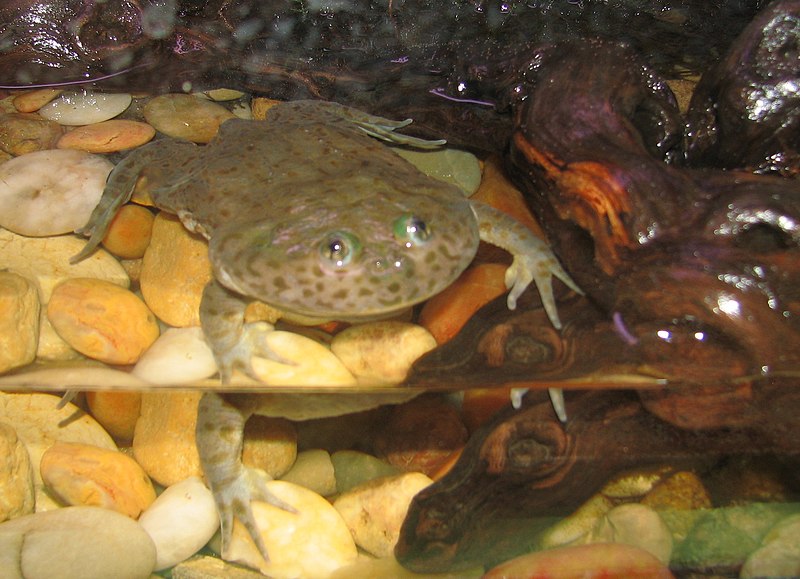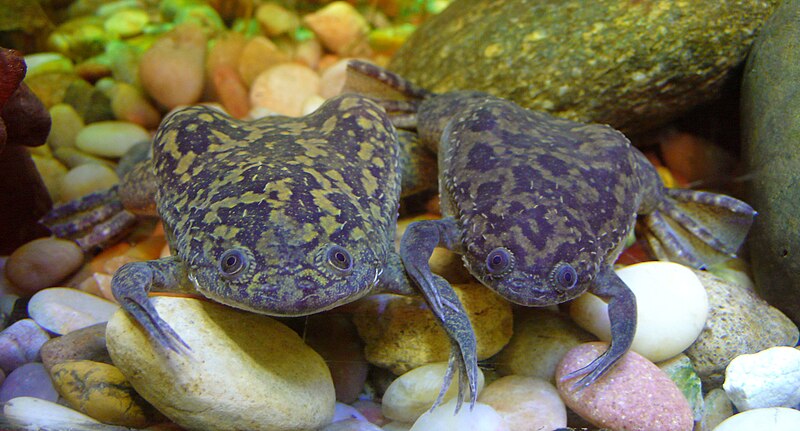 I caution frog keepers against the all-too-common “cricket and mealworm only” diet. Today we’ll cover additional means of providing amphibians a varied diet that will promote longevity and breeding. The following information applies to the care of American Bullfrogs, White’s Treefrogs, Budgett’s Frogs, most toads and many similar species. Please see my other Amphibian Care Articles for details concerning Poison Frogs, Mantellas, African Clawed Frogs, Horned Frogs and others requiring specialized diets, or write in with your questions.
I caution frog keepers against the all-too-common “cricket and mealworm only” diet. Today we’ll cover additional means of providing amphibians a varied diet that will promote longevity and breeding. The following information applies to the care of American Bullfrogs, White’s Treefrogs, Budgett’s Frogs, most toads and many similar species. Please see my other Amphibian Care Articles for details concerning Poison Frogs, Mantellas, African Clawed Frogs, Horned Frogs and others requiring specialized diets, or write in with your questions.
Wild-Caught Invertebrates
There is very little in the way of live invertebrates that hungry frogs refuse – I provide moths, beetles, sowbugs, millipedes, dragonfly larvae, grubs, millipedes, grasshoppers, tree crickets, field crickets, harvestmen, caterpillars and a variety of other easily-collected species.
Avoid using “hairy” caterpillars, spiders and other invertebrates that are able to bite or sting – a good invertebrate field guide should be part of every herpers “tool chest”. Brightly-colored insects are often toxic, as are fireflies; do not collect during times when your area is being sprayed for mosquito control.
I rely heavily upon earthworms in both winter and summer, buying or collecting them, and usually try to keep a colony going in my basement as well.
Traps and Canned Insects
The Zoo Med Bug Napper simplifies the collecting of moths and other flying insects; please see the articles mentioned in Part I for information on other collecting techniques.
Canned Insects such as grasshoppers, snails and silkworms are readily accepted from Feeding Tongs by many frogs, and are an important means of providing dietary variety when wild-caught insects are not available.
Calcium: Fish and Mice
 A minnow or shiner each 7-10 days helps ensure adequate calcium intake for frogs the size of an adult Leopard Frog or larger.
A minnow or shiner each 7-10 days helps ensure adequate calcium intake for frogs the size of an adult Leopard Frog or larger.
A diet rich in pink or adult mice will cause most frogs to suffer eye, kidney and liver problems. While these aggressive predators certainly take the occasional rodent in the wild, research has shown that insects and other invertebrates form the vast majority of their natural diet.
American Bullfrogs seem to do well with a pink mouse every month or so, but do not offer adult mice – amphibians swallow their food alive, and are often injured by a mouse’s sharp teeth. Hair also leads to potentially fatal impactions.
Commercially-Grown Invertebrates
During the colder months, or at other times when wild-caught insects are unavailable, the main portion of the diet should not be crickets, but rather a mix of earthworms (these can be used as the bulk of most species’ diets), roaches, crickets, and waxworms. Silkworms and tomato hornworms, available via internet dealers, should be offered from time to time.
I use mealworms and super mealworms sparingly, and usually select only newly-molted (white) individuals. I have found crayfishes to be an important food item for a wide variety of frogs. I remove their claws, just to be on the safe side.
You should allow insects purchased as frog food to consume a healthy diet for several days, in order to increase their nutritional value; please see the articles referenced in Part I for details.
I powder most store-bought insects with supplements, alternating among Reptivite with D3, ReptiCalcium and Reptocal. I do not use supplements when feeding wild-caught invertebrates.
Further Reading
Raising Earthworms

 That Reptile Blog – Reptile, Amphibian and Exotic Pet Care and Information
That Reptile Blog – Reptile, Amphibian and Exotic Pet Care and Information




